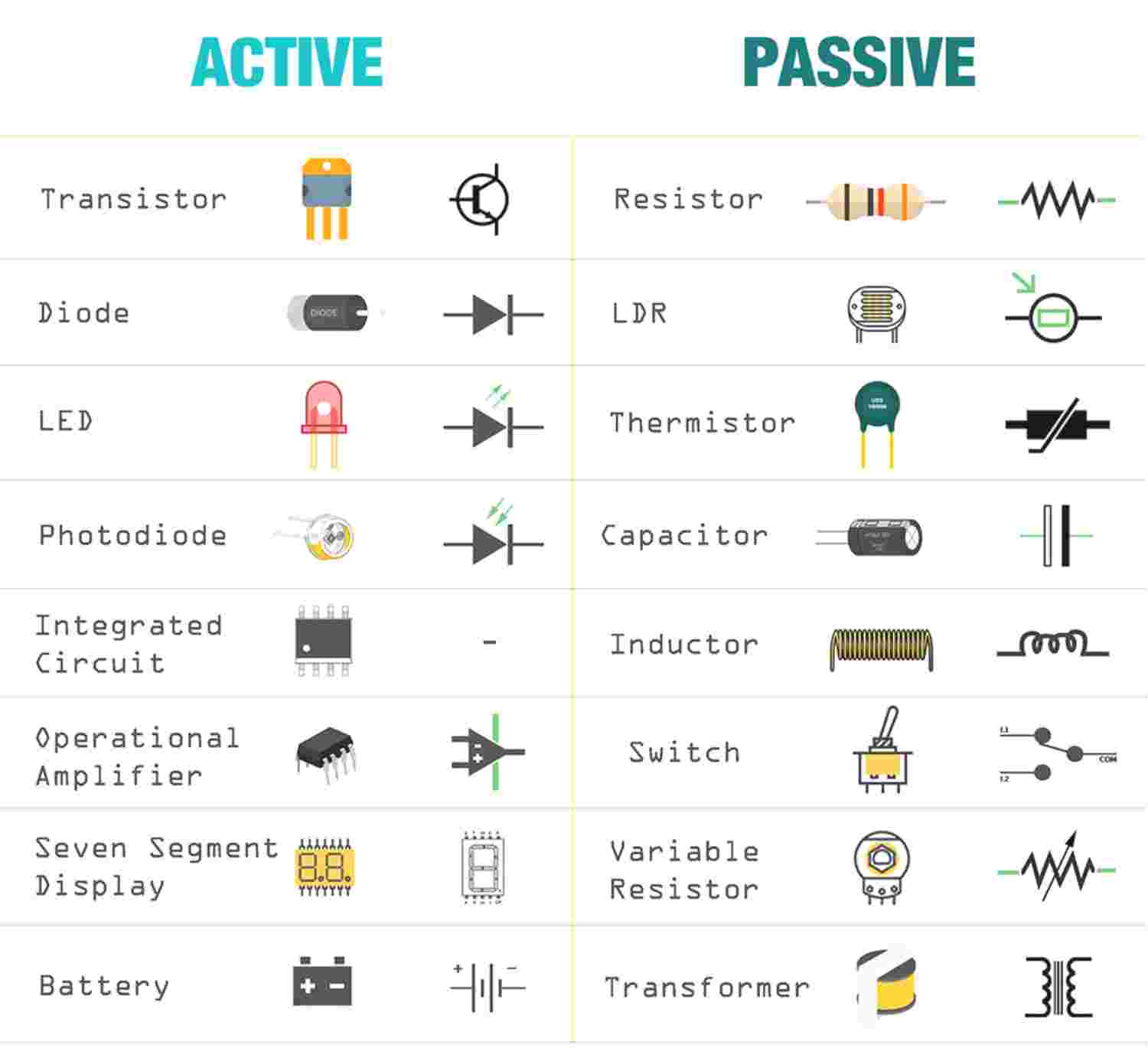Learn about the key differences between Active and Passive Components on the basis of power consumption, operational requirements, gain, storage, power factor, linearity, and energy behavior.
Active Components
Electrical Components which need an external source to initiate the operation are known as active components such as Silicon-Controlled Rectifier (SCR), Transistors, and Diodes.
Example
Since a Diode is an active element so it needs an external source (either voltage or current) in order to initiate the operation. When the diode is linked with an electric circuit, it does not start conducting the current unless the source potential approaches to 0.5 V (for Germanium) or 0.7 V (for Silicon).
Passive Components
Electrical Components which do not need an external source to initiate the operation are known as passive components such as Inductor, Resistor, and Capacitor.
Example
Since a Resistor is a passive element so it does not need an external source (either voltage or current) in order to initiate the operation. When the resistor is linked with an electric circuit with the supply voltage, it starts working without utilizing any particular voltage.

The following table explains the key Differences between Active Components and Passive Components in an electric circuit.
| Characteristics | Active Component | Passive Component |
|---|---|---|
| Power | Delivers power to the circuit | Employs power in the circuit |
| Elements | Includes diodes, transistors, SCR, batteries, and cells | Includes resistor, capacitor, inductor, transformer, transducer |
| Operational Requirements | Requires external source to their operation | Does not require any external source to their operation |
| Power gain | Capable of providing power gain (just like an amplifier) | Cannot provide any power gain |
| Energy Storage | Cannot store the energy | Can store the energy (in case of inductor and capacitor) |
| Energy behavior | can be called as Energy Donor | Can be called as Energy Acceptor |
| Current Flow | Capable to control the current flow in the circuit | Cannot control the current flow in the circut |
| Linearity | Normally non-linear | Fall under linear category mostly |
| Amplification | They can amplify the signal because of having gain more than one | They are not able to amplify the signal because of having gain less than one |
Key Takeaways of active and passive components
Active components are electronic devices that actively control the flow of electrical signals and can provide switching, amplification, or signal processing functions. Examples include operational amplifiers, transistors, and integrated circuits. Passive components primarily store, filter, or control the flow of electrical signals. Resistors, inductors, and capacitors are examples of passive components. Collectively, active and passive components establish the building blocks of electronic systems.